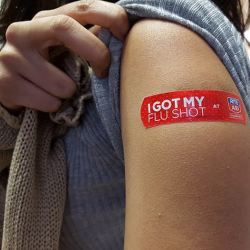The process of selecting viruses for the yearly flu vaccines is complex and inexact. For the 2023-2024 flu season, there is reason to be optimistic that the vaccines will provide good protection.

Flu is the prototype of a respiratory disease that requires repeated – yearly - vaccination to prevent infection. Although annual seasonal flu vaccines are invaluable tools for controlling the spread and severity of influenza, they do not provide immunity against every strain of the virus, which constantly mutates, sometimes radically. Although from 2010 to 2020, between 12,000 and 52,000 people died of flu in the United States annually, many Americans fail to get flu shots.
Flu vaccines that would confer long-term immunity and eliminate the need for yearly shots to protect against new variants would be an important public health advance, but attempts to develop them have been unsuccessful. So, we are left with a complex process, described below, for formulating the vaccines for each flu season.
Seasonal flu vaccines are designed to protect against the four main groups of flu Type A and B viruses that experts believe are most likely to spread and cause illness during the upcoming flu season. Current U.S. flu vaccines protect against two forms of both influenza A and B. The vaccines’ components are selected based on:
- which flu viruses are causing illnesses prior to the upcoming flu season,
- the extent to which those viruses are spreading before the upcoming flu season,
- how well the previous season’s vaccines may protect against those flu viruses,
- the ability of vaccine viruses to provide cross-protection against a range of related flu viruses of the same type.
This excerpt from the CDC’s document, “Selecting Viruses for the Seasonal Influenza Vaccine,” succinctly describes the process for formulating the flu vaccines:
There are currently 144 national influenza centers in over 114 countries that conduct year-round surveillance for flu viruses as part of the World Health Organization (WHO) Global Influenza Surveillance and Response System (GISRS). This involves receiving and testing thousands of flu virus samples from patients. For human seasonal flu surveillance, the laboratories send representative viruses to five of the seven WHO Collaborating Centers for Influenza, which are located around the world.
Twice a year, the WHO organizes a consultation with the directors of the seven WHO Collaborating Centers, Essential Regulatory Laboratories, and representatives of key national laboratories and academies. After reviewing the results of surveillance, laboratory, and clinical studies, and the availability of flu vaccine viruses, they make recommendations on the composition of flu vaccines.
These meetings take place in February for selection of the upcoming Northern Hemisphere’s seasonal flu vaccines and in September for the Southern Hemisphere’s flu vaccines. The WHO vaccine composition committee, which is comprised of independent technical advisors, i.e., directors of each of the WHO Collaborating Centers and ERLs), meets to present global flu data and recommend specific vaccine viruses for trivalent (three-virus component) and quadrivalent (four-virus component) flu vaccines. Next, each country makes its own decision about which viruses should be included in flu vaccines licensed in their country.
In the United States, the FDA’s Vaccines and Related Biological Products Advisory Committee (VRBPAC) makes the final decision about vaccine viruses for domestic flu vaccines. Information about the circulation of flu viruses and available vaccine viruses is summarized and presented to VRBPAC in February or March of each year for the U.S. decision about which viruses to include in the upcoming season’s flu vaccine.
The various manufacturers of flu vaccines then begin to produce them, using a variety of technologies, for the next flu season, seven or eight months away.
How good were this year’s predictions about which viruses to include in the 2023-2024 vaccines? Mid-season data from the Southern Hemisphere (where the fall-winter flu season precedes that in the Northern Hemisphere) suggest the current season's trivalent and quadrivalent inactivated flu vaccines protect quite well against the most serious outcomes, according to a September 15 report by CDC researchers. They concluded:
The 2023 Southern Hemisphere seasonal influenza vaccine reduced the risk for influenza-associated hospitalizations by 52%. Circulating influenza viruses were genetically similar to those targeted by the 2023–24 Northern Hemisphere influenza vaccine formulation. This vaccine might offer similar protection if these viruses predominate during the coming Northern Hemisphere influenza season.
The language is measured, but the report offers presumptive good news about the currently available round of vaccines.
A significant and sobering finding in the CDC report was that less than a quarter of the hospitalized patients had been vaccinated, which led them to recommend that "Health authorities worldwide should encourage influenza vaccination for persons at increased risk for severe disease, including young children, persons with preexisting health conditions, and older adults, as well as those at increased risk for exposure to or transmission of influenza virus, such as health care personnel.”
I concur. In the end, it is not vaccines that prevent infections; it is vaccinations.
